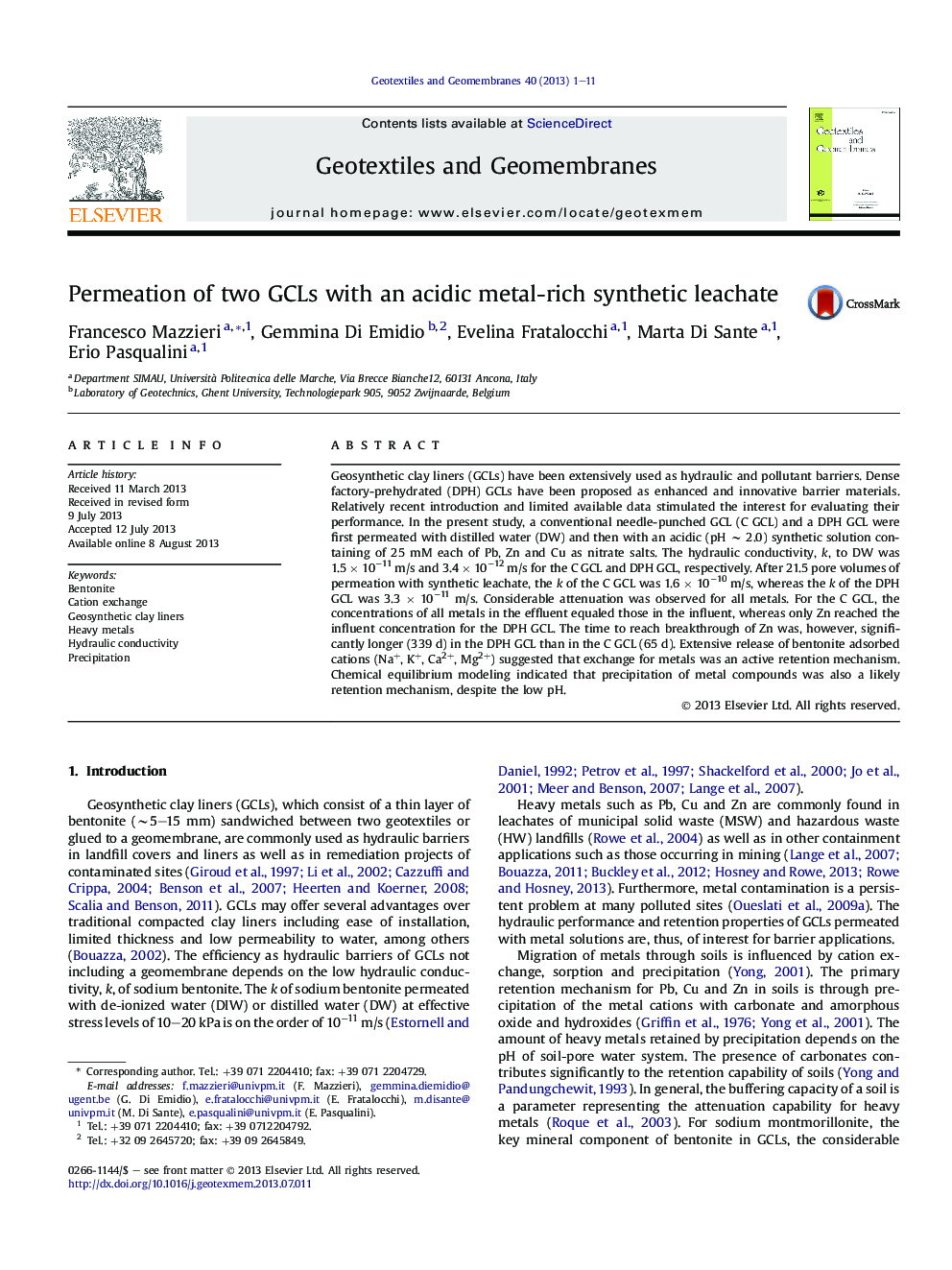| Article ID | Journal | Published Year | Pages | File Type |
|---|---|---|---|---|
| 274141 | Geotextiles and Geomembranes | 2013 | 11 Pages |
Geosynthetic clay liners (GCLs) have been extensively used as hydraulic and pollutant barriers. Dense factory-prehydrated (DPH) GCLs have been proposed as enhanced and innovative barrier materials. Relatively recent introduction and limited available data stimulated the interest for evaluating their performance. In the present study, a conventional needle-punched GCL (C GCL) and a DPH GCL were first permeated with distilled water (DW) and then with an acidic (pH ∼ 2.0) synthetic solution containing of 25 mM each of Pb, Zn and Cu as nitrate salts. The hydraulic conductivity, k, to DW was 1.5 × 10−11 m/s and 3.4 × 10−12 m/s for the C GCL and DPH GCL, respectively. After 21.5 pore volumes of permeation with synthetic leachate, the k of the C GCL was 1.6 × 10−10 m/s, whereas the k of the DPH GCL was 3.3 × 10−11 m/s. Considerable attenuation was observed for all metals. For the C GCL, the concentrations of all metals in the effluent equaled those in the influent, whereas only Zn reached the influent concentration for the DPH GCL. The time to reach breakthrough of Zn was, however, significantly longer (339 d) in the DPH GCL than in the C GCL (65 d). Extensive release of bentonite adsorbed cations (Na+, K+, Ca2+, Mg2+) suggested that exchange for metals was an active retention mechanism. Chemical equilibrium modeling indicated that precipitation of metal compounds was also a likely retention mechanism, despite the low pH.
